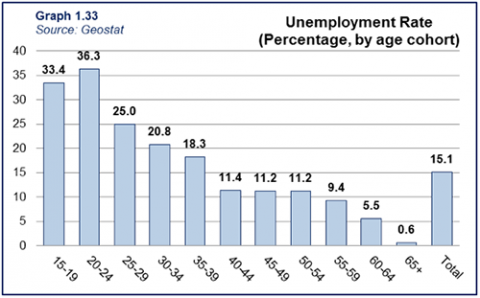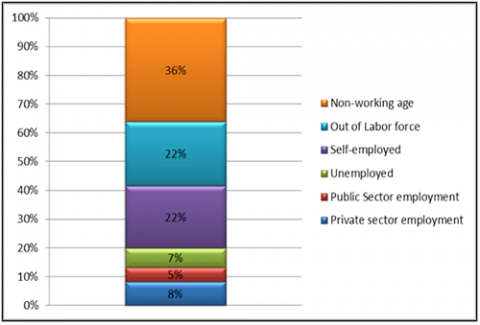 02
July
2024
02
July
2024
ISET Economist Blog
 Tuesday,
23
April,
2013
Tuesday,
23
April,
2013

 Tuesday,
23
April,
2013
Tuesday,
23
April,
2013
There is no arguing that during the ten years since the Rose Revolution, the Georgian economy registered an impressive growth performance, averaging 6.6% per annum. Summing up Georgia’s post-2004 growth experience, a recent ISET-PI study (Babych and Fuenfzig (2012)), finds it “remarkable not only in light of the 5.3 percent average growth rate in the 1995-2002 period but also considering that the average GDP growth rate for European and Central Asian developing countries was about 5.1 percent in the period between 2003-2010.”

Yet behind the glistening façade of these growth statistics, there is political and social uncertainty resulting from widespread poverty and inequality. The neglect of the social dimension might even jeopardize some of the positive achievements of the post-2003 reforms.
Using the traditional growth accounting method one can decompose Georgia’s GDP growth rates into the sum of the growth rates of labor, capital, and the total factor productivity. The contribution of labor to economic growth is perhaps the most important given the social angle. The official unemployment statistics (see the figure) look neither too bright nor very alarming, yet these numbers do not tell the whole story.
The second chart gives a much better impression of the situation in Georgia. In 2011, 48% of the employed were categorized as self-employed. While no detailed statistics are available, a huge part of the self-employed is actually subsistence farmers. In other countries, self-employed people are typically architects, designers, lawyers, private physicians, and free-lance computer experts, many of whom are very well off. In the corresponding statistics, somebody who grows vegetables in a garden gives some private lessons, or occasionally serves as a taxi driver, would not be considered self-employed. In Georgia, on the other hand, it is safe to label most of the self-employed to be underemployed at best.
The picture that emerges is staggering. It suggests that Georgia has so far failed to engage the majority of its working-age population in the formal sector of the economy. This has important implications for aggregate productivity, poverty, and inequality.

Another aspect of Georgia’s labor market misery is the high incidence of youth unemployment. This is particularly worrying because the jobless young of today are likely to be the less productive workers of tomorrow, negatively affecting their own lifetime income and the overall productivity in the economy.
Georgian decision-makers have recognized the huge problem of unemployment. Actually, the Georgian government has already tried out many things to alleviate the situation, and it was more creative and more resourceful than governments of most other countries that face similar difficulties. Yet Georgia’s economic problems are colossal, and there are definitely no quick fixes.
One major reason for high unemployment is the lacking suitability of existing skills to market needs. The UNDP Human Development Report (2010) places Georgia among the leading countries of the world in terms of the formal education accomplishment of the unemployed: in 2008 about 81% of all Georgian unemployed had completed secondary or higher education. On the surface, this looks like a great achievement, yet in fact, it shows that formal education has failed to give people marketable skills that would make them attractive candidates in the marketplace. Georgia should reform vocational education and implement training programs in partnership with the private sector. This would address both the labor market mismatch and youth unemployment.
Another often mentioned recipe is to improve the productivity of the agricultural sector. Like tourism, agriculture has the potential to provide employment to people whose formal education is not demanded by employers. Many concrete policy measures have been proposed, like to promote the cooperation of (smallholder) farms for marketing their products. This would lead to better integration of small farms into the value chain. At the same time, one could reduce the cost of capital, enabling farmers (or their cooperatives) to upgrade their production technology. One could also invest in public infrastructure and assist in facilitating exports.
Such measures are costly, success is uncertain, and they take lots of time to be implemented and to show impacts. Yet Georgia has no choice but to travel this long and stony road.





